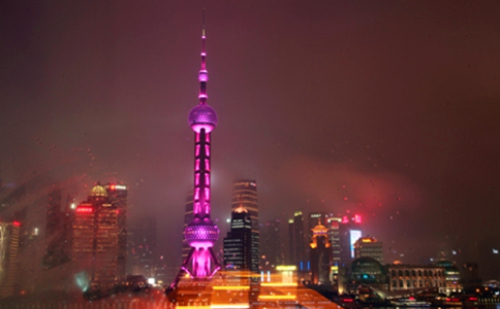Introduction: The Yangtze River Delta is one of the regions with the highest level of openness in China, the most innovative capacity, the most dynamic economy, and the largest intake of foreign population. There are numerous ports, of which Shanghai Port and Ningbo Port are more famous. Today we come to learn more about the information of these ports!

Shanghai Port: Located at the leading edge of the Yangtze River Delta, in the middle of China's 18,000 km coastline, it is located at the intersection of the Yangtze River’s east-west transport channel and the north-south maritime transport channel. It belongs to the Yangtze River estuary and is the major hub port in China’s coastal regions. It is an important port for China’s opening to the outside world and its participation in international economic trade. 99% of Shanghai's foreign trade supplies go through Shanghai Port, and the annual foreign trade throughput accounts for about 20% of the country's major coastal ports. As a world-famous port, Shanghai Port’s cargo and container throughput ranked first in the world in 2010. Won the world record of the world's largest cargo throughput of the World Record Association of China.
Ningbo Port: Ningbo Port is divided into three zones : Ningbo Old Port, Zhenhai Operation Zone and Beilun Operation Zone. It is located in the middle of China's mainland coastline and has a moderate geographical location. It is a well-known deep-water port in Mainland China. Ningbo Port is uniquely endowed with natural conditions and convenient radiation inside and outside. Outward facing directly to East Asia and the entire Pacific Rim. From sea to Hong Kong, Kaohsiung, Busan, major traders and breeders are all within a range of 1,000 nautical miles. Inland can not only connect coastal ports, but also through Yangtze River and Beijing-Hangzhou Grand Canal, directly covering the entire East China region and the economy. The developed Yangtze River Basin is an ideal distribution center for ocean-going radiation to the ports of the Americas, Oceania, and South America from the Chinese coast. The water depth in Ningbo Port is small and the water depth of the approach channel is more than 18.2 meters, and 250 thousand tons of 300,000 tons of ships can enter the port. The deep water shoreline that can be developed reaches 120km or more and has broad prospects for development and construction. There are natural barriers on the north side of Beilun Port, and it is not necessary to build a breakwater on the piers in Beilun Port. It has a low investment, high efficiency, and a wide land area behind the deep water line, which is extremely beneficial to the development of port storage, warehousing and coastal industries. .
Zhoushan Port: Zhoushan Port has a long history. During the Tang and Song dynasties, it was a safe harbor and transit port for China's north-south shipping and international shipping. Zhoushan Port is located in Zhoushan City, Zhoushan Island, Zhejiang Province. There are eight port areas in Dinghai, Shenjiamen, Laotangshan, Gaoting, Laoshan, Laojiao, Lvhuashan and Yangshan. Located at the “T†junction of China’s North-South route and the Yangtze River route, water transportation is very convenient; backed by the economically developed Yangtze River Delta, it is a maritime gateway to the provinces of Jiangsu, Zhejiang and the Yangtze River basin. The port has abundant deep-water shoreline resources and superior natural conditions for the construction of ports. The shoreline for the pier can be built with 1,538 kilometers, of which the deep-water coastline with a water depth greater than 10 meters is 183.2 kilometers; and the deep-water coastline with a water depth greater than 20 meters is 82.8 kilometers.
The above is a brief introduction to Shanghai Port, Ningbo Port, and Zhoushan Port. Is it further broadening the knowledge?
Aluminum Foil Roll Wrapping and Rewinding Machine,Aluminum Foil Roll Making Mach,Mill Finish Aluminum Coil with High Quality,Mill Finish Aluminum Coil
GanSu Port Logistics Co.,Ltd , http://www.gskouan.com
![<?echo $_SERVER['SERVER_NAME'];?>](/template/twentyseventeen/skin/images/header.jpg)